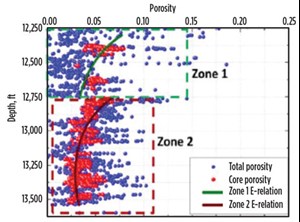What’s new in exploration
This summer, in the northern hemisphere, we see a great deal of interest in new-area exploration; 95% of it offshore. Russia, the North Sea and the Gulf of Mexico remain the favorites. Everyone wishes that they owned northeastern South America. But the Dominican Republic—a licensing round?
Offshore exploration is cheaper per square kilometer, compared to pre-2014, but marine production costs remain high in spite of continual cost-cutting. The BIG however? Reserves found in conventional offshore reservoirs are huge. Right now, traditional tech can produce from good-perm sands without a need to frac sideways into the next province. Technology development for primary exploration, also useful in production development, seems to have a new life, spurred on by the recent $55-plus oil. DUG, CGG, ION, Shearwater and Sercel, to mention a few, are tech leaders. TGS and Fairfield continue to dominate marine surveys, although they are not the only two sailors in the biz.
The human touch required. Technology and data, alone, do not find oil. If that was enough, all of us would have already found oil, without A.I., in everyday newsletters. No matter how much we put into A.I., it remains that a human had something to do with the output. There will, forever, be remaining external factors in exploration to cry over: usually caused by people. I was told to shoot our 12th, 2D seismic survey over the Qatar Arch. All 12 looked exactly alike, some with the same ship and cable as in previous attempts. Marine seismic was blind below a very hard anhydrite layer. We lost out on a 17-Tcf find.
When I saw the same acoustic story develop in offshore North West Australia, after two failed step-outs, I ordered a VSP in our phenomenal discovery well. The VSP image told us that all the surface seismic data were useless below a shallow, dense carbonate. We drilled wells 4 and 5; management told me they did not want X to see us change our E budget mid-stream. Too bad for the folks working the Cotton Valley that year. Internal politics always outplay science, and often common sense. Maybe I was transferred to Argentina for being so informative—no, I haven’t learned.
Current trends to obtain micro rock parameters from macro resolution data continue, and hopefully will not stop. Like most exploration or development, you never really know how good you were in prediction until you have spent your money. That is where case histories benefit the rest of us.
One particular example. Often, we worship new tech, and hope it results in what we want or believe. Reality usually returns a reward of knowledge, but not always production. I have met a few science-successful, non-commercial holes. Read below Durrani’s results in West Texas, circa 2014,1 and see Fig. 1. How far have we traveled?

“This study covers the rock physics depth trends and amplitude variation with offset (AVO) modeling for the challenging Granite Wash reservoir in Stiles Ranch field, Anadarko basin, Texas (USA). Using an empirical porosity-depth function calibrated with core data, we estimate rock physics depth trends (VP, VS and impedances) in an attempt to link rock physics properties to Granite Wash diagenesis. We apply Hertz-Mindlin’s two contact models for un-cemented (soft) and stiff sands, and Dvorkin and Nur’s cement model for cemented sands using up-scaled well log data. The log data are sequentially upscaled to seismic scale by the Backus technique, considering only transversely isotropy with vertical symmetry axis (VTI), to ensure scale consistency within both of the data sets. The rock anisotropic parameters logs (ε, δ and γ) for AVO and lithology discrimination, are estimated as a function of depth. Based on the derived elastic properties, joint AVO analysis, using various PP and converted PS wave approximations, shows distinct advantages in classifying fluids properties for the Granite Wash… Anisotropic AVO response appears prominent for incidence angles greater than 15˚ in both VTI and HTI cases, due to the presence of layering and fractures in the sands.”
The authors used methods from Mindlin, 1949, to Backus, 1962, to Thomsen, 1986, to Dutta, 2008. Looking at Fig. 1, one still needs a statistical eye to correlate core porosity, a 100-year-old technology, to 2013 petrophysical log porosity, because they measure completely different well samples. WO
REFERENCE
- Durrani, Z., J. Chen, B. Tapp, and K. Willson, “Rock physics depth trends and AVO modeling of Granite Wash (tight sands) in the Stiles Ranch field, Anadarko basin, Texas, USA, 522-527.10.1190/segam2014-0959.1.

- Advancing offshore decarbonization through electrification of FPSOs (March 2024)
- The reserves replacement dilemma: Can intelligent digital technologies fill the supply gap? (March 2024)
- Subsea technology- Corrosion monitoring: From failure to success (February 2024)
- Prices and governmental policies combine to stymie Canadian upstream growth (February 2024)
- U.S. producing gas wells increase despite low prices (February 2024)
- U.S. drilling: More of the same expected (February 2024)
- Applying ultra-deep LWD resistivity technology successfully in a SAGD operation (May 2019)
- Adoption of wireless intelligent completions advances (May 2019)
- Majors double down as takeaway crunch eases (April 2019)
- What’s new in well logging and formation evaluation (April 2019)
- Qualification of a 20,000-psi subsea BOP: A collaborative approach (February 2019)
- ConocoPhillips’ Greg Leveille sees rapid trajectory of technical advancement continuing (February 2019)


